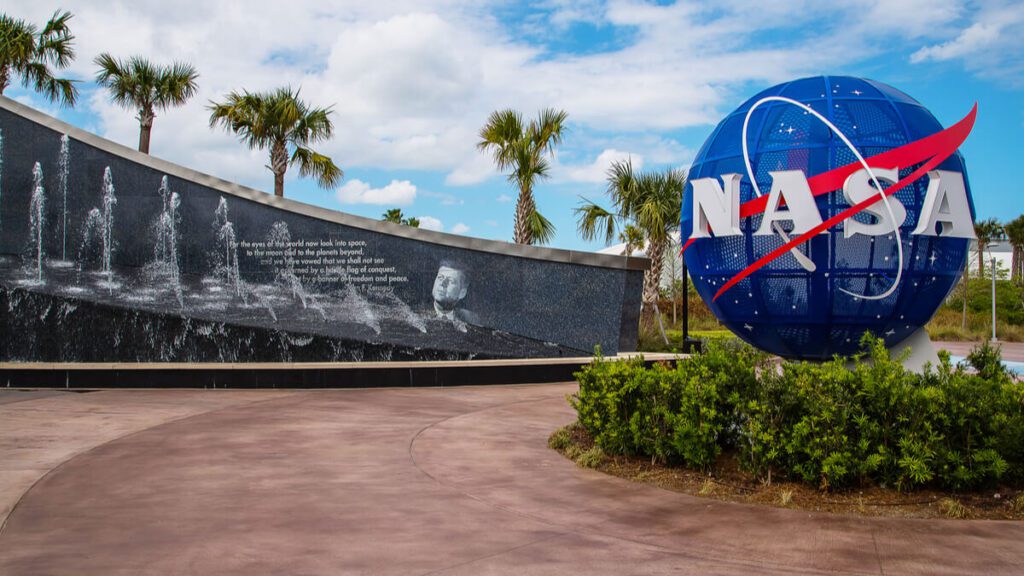
It’s been a busy week for NASA, with early Monday morning seeing the docking of the Northrop Grumman Cygnus N-G15 resupply mission spacecraft to the ISS, which includes thousands of pounds of food and science experiments, including a joint HPE/Microsoft collaboration to bring advanced computing power and AI to the station with the Spaceborne Computer-2.
Thursday was the historic landing of NASA’s Perseverance rover on Mars which made a touchdown after a 203-day journey.
The Saturday afternoon weekend launch of the resupply mission from NASA’s Wallops Flight Facility at Wallops Island, Virginia, deployed solar arrays several hours into its journey to help power the Cygnus en-route to the ISS, with the craft arriving Monday at approximately 4:38 a.m. (EST.)
On Monday early morning, Japan Aerospace Exploration Agency (JAXA) astronaut Soichi Noguchi used the space station’s robotic arm to capture Cygnus upon its arrival, while NASA astronaut Michael Hopkins monitored telemetry during the rendezvous, capture and installation of the Unity module’s Earth-facing port, according to press statement from NASA.
This is Northrop Grumman’s 15th cargo flight to the space station and is the fourth under its Commercial Resupply Services 2 contract with NASA. Cygnus launched on an Antares 230+ rocket from the Virginia Mid-Atlantic Regional Spaceport.
The lead NASA flight director for the mission, Adi Boulos, said in a statement, “I am humbled to be the International Space Station Flight Director for the Northrup Grumman CRS-15 mission. This spacecraft has the honor of being named the S.S. Katherine Johnson. As a Black woman, Katherine Johnson shattered race and gender barriers to live out her dreams and become a pivotal part of this country’s young space program.”
Johnson was a pioneering member of the U.S. space program, both as an early member, and as one of the first African American women to join what was to become NASA.
“Fifty-nine years ago, today, astronaut John Glenn became the first American to orbit Earth after personally asking for Katherine Johnson to verify his Mercury missions’ orbital trajectory calculations,” Boulos added. “Katherine Johnson was an asset to our space program, and I am honored to work for a mission that expands her legacy even further.”
The resupply flight will support dozens of new and existing investigations. A partial list of the scientific investigations Cygnus is delivering to the space station includes:
High-performance computing aboard the space station
Improved high-performance computing will be required for space missions as humans prepare for additional exploration throughout the solar system. Currently, computing capabilities in space are reduced compared to capabilities on the ground because they prioritize reliability over performance, creating challenges when transmitting data to and from space.
Launched in 2017, the Spaceborne computer study ran a high-performance commercial off-the-shelf computer system in space, successfully performing more than 1 trillion calculations (or one teraflop) per second for 207 days without requiring reset.
The NG-15 mission includes Spaceborne Computer-2 which will explore how commercial off-the-shelf computer systems can advance space exploration by reliably processing data significantly faster in space, speeding scientists’ time to data access and analysis from months to minutes.
After installation, researchers will test Microsoft’s Azure cloud system not only for intensive processing to save the ISS crew time in function, but to also test artificial intelligence (AI) capabilities as part of the system. The Spaceborne Computer is based on HPE’s Edgeline Converged Edge system.
Microsoft and SpaceX are also working together on the Azure Space project, with Microsoft planning on accessing the growing Starlink satellite constellation for joint testing at the ground based Azure Modular Datacenter.
I dream of space
The ESA (European Space Agency) Dreams experiment will take a closer look at astronaut sleep. The investigation serves as a technology demonstration of the Dry-EEG Headband in microgravity, while also monitoring astronaut sleep quality during a long-duration flight mission.
Raw data will be available to scientists for their analysis, while the crew also can input direct feedback on their sleep with a tablet application. “Sleep is central to human health, so a better understanding of sleep in provides a more comprehensive understanding of human health in microgravity,” NASA’s statement said.
Prepping for the Moon
The International Space Station serves as a testing ground for technologies planned for use on future missions to the Moon. The A-HoSS investigation puts tools for the crewed Artemis II mission to the test.
Built as the primary radiation detection system for the Orion spacecraft, the Hybrid Electronic Radiation Assessor (HERA) was modified for operation on the space station. By verifying that HERA can operate without error for 30 days, it validates the system for crewed Artemis mission operations.
“These are just a subset of the hundreds of investigations currently being conducted aboard the orbiting laboratory in the areas of biology and biotechnology, physical sciences, and Earth and space science. Advances in these areas will help keep astronauts healthy during long-duration space travel and demonstrate technologies for future human and robotic exploration missions as part of NASA’s Moon and Mars exploration approach, including lunar missions through NASA’s Artemis program,” NASA’s statement said.
The Cygnus spacecraft will remain at the space station until May before it disposes of several thousand pounds of trash through its destructive re-entry into Earth’s atmosphere.